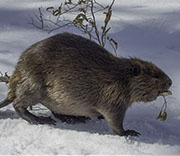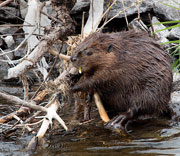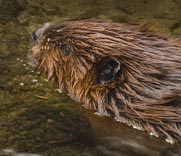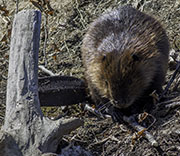
Beaver (Castor canadensis)
Beaver’s are truly strange and interesting animals. It is almost like they have super powers!
The beaver tail is a multi-tool. It is leathery and flat and the shape of a paddle. It is a propeller in the water, a prop on land, it is a trowel for cementing mud, a slapper to signal to other beavers of danger.
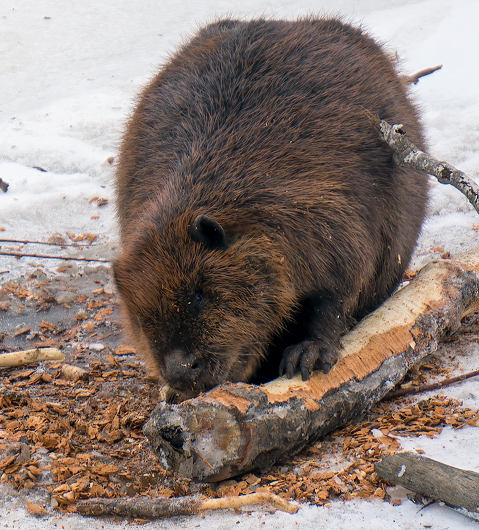
Beaver’s fur is dense and insulating to help them exist in ice cold water all winter long. They secrete oils from sac at the rear that they can apply to their fur to make it waterproof.
They have crazy looking webbed feet. They have small beady eyes that have transparent membranes that are like swimming goggles, allowing them to see clearly under the water. Their ears and nostrils have valves that close while underwater. They can chew while submerged without getting water in their lungs. And then there’s those crazy teeth that are sharp and strong enough to cut through trees and carry large branches.
Beavers are amazing swimmers and can stay under water for up to 15 minutes. They are mostly nocturnal and do most of their work from dusk to dawn.
Beavers are animal architects that can create their own environment by building dams, lodges and canals. It is really astonishing.
Their lodges of sticks and branches are well designed with under water entrances, ventilation and a dry chambers for them to climb completely enclosed and safe from predators and the cold weather. They have a dining chamber and a sleeping chamber with insulated walls and a comfortable dry floor. They have food storage just outside the door so they can stay and live comfortably under the ice during the winter.
By building these dams, they create beaver ponds that provide the group or family with calm deep waters where they are protected from predators and provide a food supply for their clan.
Naturally, these pools are benefit a wide variety of flora and fauna species by providing habitat and nourishment. These beaver ponds literally change the landscape for many decades, even long after the beavers are gone.
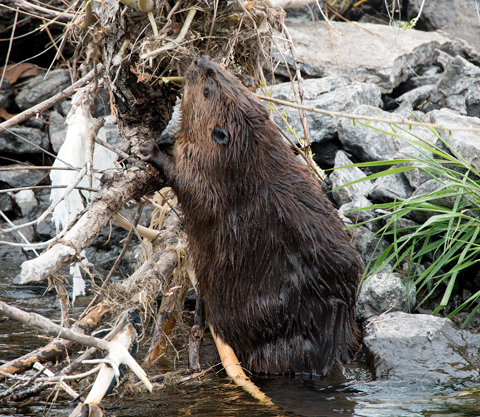 Beaver's diet is mainly tree bark during the fall and winter. They prefer the soft wood of aspen trees which is easier for chewing and peeling. Beavers also enjoy other tree species like maples, alders, willow, poplar, beech and birch. During the spring and summer their diet includes aquatic plants like water lilies, lily pads, ferns, berries, grasses and sedges. Beavers cache their food for the winter, piling up branches and saplings next to their lodge
Beaver's diet is mainly tree bark during the fall and winter. They prefer the soft wood of aspen trees which is easier for chewing and peeling. Beavers also enjoy other tree species like maples, alders, willow, poplar, beech and birch. During the spring and summer their diet includes aquatic plants like water lilies, lily pads, ferns, berries, grasses and sedges. Beavers cache their food for the winter, piling up branches and saplings next to their lodge
Beavers have strong family bonds with a tight social organization. The adult parents are a monogamous pair and are the head of group which can have up to 10 other members in the clan. Both parents raise the offsprings. The yearlings help with caching food and repairing the dams all while learning life skills needed to survive. Depending on conditions, the young will leave the clan in one to three years. The young who stick around will help with the chores and caring for the new offspring.
If you get a chance to see beavers at work, they are a thrill to watch. While paddling in our canoe, we have heard the young vocalizing when we were just outside of the lodge. On many occasions, we have inadvertently paddled or set up camp in their territory. They showed that we were unwelcome by loudly slapping their tails against the water.
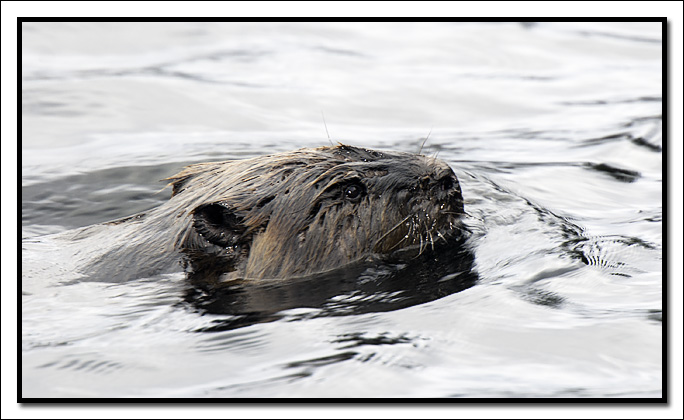
Beavers spend most of their lives in the water or in the safety of their dens.
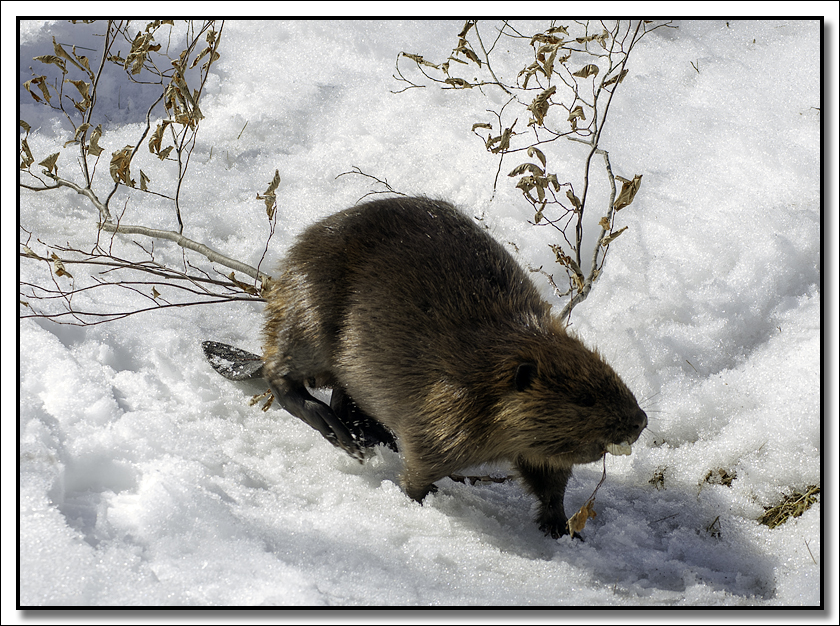
During mild spells in the winter, adult beavers will emerge from their icy world to feed on fresh woody stems along the shore
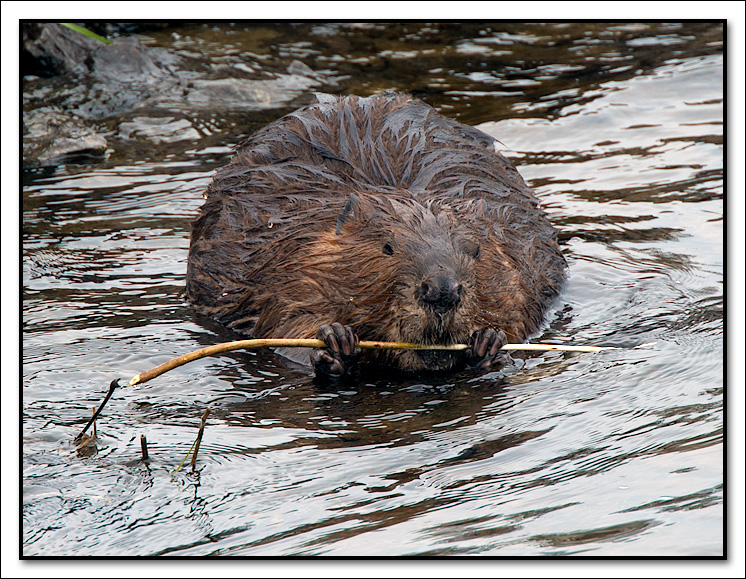
Beaver's favorite trees for dining are aspen, willow, maple, poplar, beech, birch and alder.
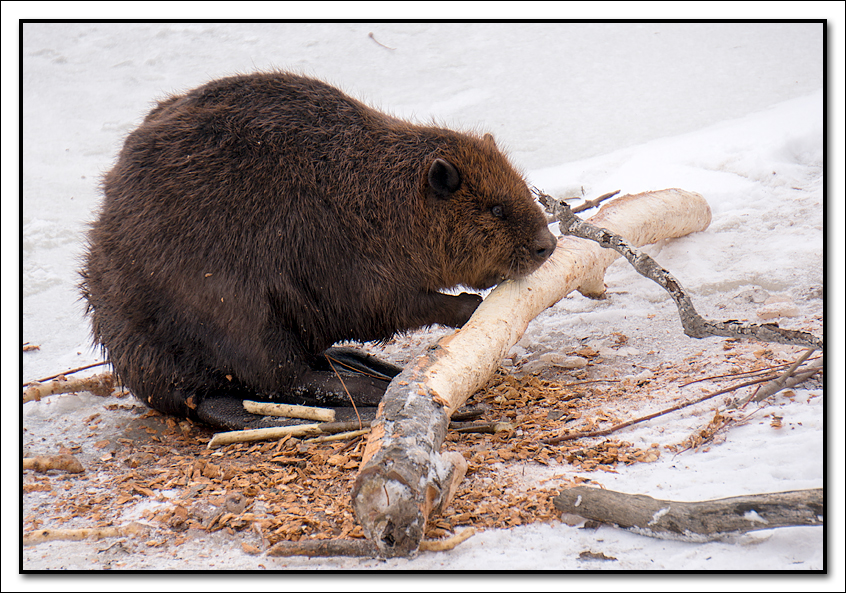
Beavers have large central incisors (front teeth) that are always growing. They must keep them trimmed by gnawing bark.
